 Mirrorless Systems Guide 2024
Mirrorless Systems Guide 2024
Overview
Mirrorless cameras are each part of a system. The system dictates which sensor-sizes are available and lenses are compatible. For general information on mirrorless cameras, start with Step 1 of this mirrorless guide. In Step 3 - this page - the most popular mirrorless systems are compared and described in detail.
MostWith the exception of Panasonic and Olympus which share one. camera manufacturers launched their own mirrorless systems, several even introduced new platforms twice even. They bootstrapped new systems with preferential compatibility with an existing system, allowing mirrorless cameras use DSLR lenses from the same manufacturer with few limitations via a mount-adapterExcept for Pentax K and Sony A systems which use a DSLR mount..
Micro Four-Thirds
Micro Four-Thirds is the original mirrorless system. It was launched in 2008 jointly by Olympus and Panasonic. This head start, plus the fact that it is actively developed by two major digital camera manufacturers, make it the most extensive mirrorless system in terms of cameras and even more so when it comes to lenses.
The standard behind Micro Four-Thirds is based on an older system used by now discontinued Olympus DSLRs. Both these platforms were designed for a 2X crop-factor and 4:3 aspect-ratio. The name Four-Thirds refers to this aspect-ratio, while the term Micro was added to describe a shorter flange distanceThe distance between the sensor and lens mount. but the intended sensor-size is identical. Physics puts Micro Four-Thirds at a 2-stop disadvantage in comparison to Full-Frame and just over ½-stop compared to APS-C.
Panasonic & Olympus Mirrorless Cameras
Panasonic and Olympus continuously introduce new Micro Four-Thirds cameras. They each maintain multiple series of Micro Four-Thirds mirrorless digital cameras, from entry-level to high-end professional models. Olympus added last year the OM-D E-M1X reviewed here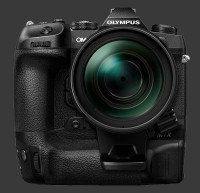
Olympus OM-D E-M1X for professional action photographers.
The approach taken by these two companies differs on several key features. Panasonic used Contast-Detect AF on every single one of their mirrorless cameras. They invented the Depth-from-Defocus technology to improve the performance of Contrast-Detection. Olympus added Phase-Detect AF to many of their cameras, although Contrast-Detect remains in use among their entry-level offerings. With state-of-the-art sensors, there is little performance difference left between these two AF systems.
All Olympus mirrorless cameras feature built-in image-stabilization. They have been perfecting their system for years and now offer best-in-class stabilization with up to 7-stops of efficiency using a 5-axis sensor-shift system assisted by GPS. Panasonic initially went with in-lens optical image-stabilization until they added IBIS to the GX8 in 2015. Since then, 2/3 of their new Micro Four-Thirds mirrorless cameras include it.

When Panasonic started with built-in stabilization, they invented Dual IS which combines both in-body and optical stabilization to deliver further improvements. Olympus later implemented an equivalent system. This required collaboration between the camera and lens, so it is not available on all body and lens combinations.
Olympus Mirrorless Series
The Olympus lineup is divided onto the entry-level PEN series and the OM-D class which is split among three levels of advanced cameras. Olympus has the tradition of making feature-rich cameras with advanced functionality across the board. Even their PEN mirrorless series offers extensive bracketing options, advanced metering modes, Bulb exposure and much more. Except for one, Olympus PEN have limited external controls with just a single control-dial, few buttons and no built-in viewfinder. Some models supported an Optional EVF but no current one does.
The Olympus PEN F
Olympus PEN F is alone in the PEN series in that it features a built-in EVF with Eye-Start Sensor plus dual control-dials and numerous external controls. Although launched in 2016, it still packs the highest Micro Four-Thirds resolution sensor and a 5-axis image-stabilization mechanism effective to 5-stops which remains among the top-performing ones.

There are 3 branches of OM-D plus one unique camera. Smaller numbers are more advanced models. The E-M10 series, now at Mark III
Olympus OM-D E-M10 Mark III, are the smallest and the only not weatherproof OM-D. Like all OM-D, these mirrorless still offer dual control-dials and feature built in EVF with Eye-Start sensor. The mid-range E-M5 series looks incredibly similar yet with better components including high-magnification EVF optics, more effective image-stabilization and a weatherproof body. These improvements almost double the price with the E-M10 Mark III currently selling for $650 USD and the Olympus OM-D E-M5 Mark III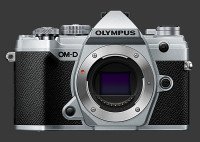
Olympus OM-D E-M5 Mark III currently going for $1200 USD.
Near the top, the E-M1 series has seen one revision since its launch. The E-M1 Mark II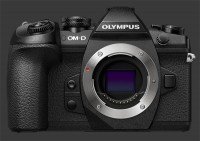
Olympus OM-D E-M1 Mark II is a professional-grade mirrorless with a sturdy weatherproof and freezeproof body that features a large 0.74X magnification EVF. It introduced an extremely fast sensor paired with a highly capable processor that lets it capture full-resolution images at 60 FPS and even maintain 18 FPS with Continuous AF. The flagship E-M1X
Olympus OM-D E-M1X is built around the same sensor technology with dual processors in a huge body that features dual-grips, each having dual control-dials, dual joysticks, dual batteries and the best image-stabilization around, effective to 7-stops which requires compensation for the rotation of the Earth is is possible thanks to a built-in GPS and Digital Compass.

Panasonic Micro Four-Thirds Series
Panasonic Micro Four-Thirds mirrorless digital cameras are divided into families. They recently repositioned some models which makes the entire historical lineup confusion. Looking at current models, there are 3 series:
- G: The first mirrorless series is evolving towards the high-end as technological advancements allow more features to be packed into their miniature-DSLR-style body. All G-series cameras offer a built in EVF with Eye-Start Sensor and dual control-dials. Models launched after the G7

Panasonic Lumix DMC-G7 all include built-in image-stabilization in a weatherproof body. The Panasonic Lumix G9
Panasonic Lumix G9 is now the flagship Micro Four-Thirds mirrorless, offering triple control-dials and high-speed sensor capable of 60 FPS or 20 FPS with Continuous AF. - GH: This series prioritizes performance and extensive features for video, some unique among stills cameras. All GH series can record Cinema 4K video with external audio input and output, plus time-code. GH-series cameras are relatively large for mirrorless, while offering rare triple control-dials and a large built in EVF in a weatherproof body. The GH5s

Panasonic Lumix GH5s is unique in that it uses a larger sensor which gets cropped to the same 2X FLM at different aspect-ratio to maintain a constant diagonal field-of-view, although its larger sensor prevents the camera from offering IBIS. - GX: Actually a family for 3 series split by the number of digits in the model number. The GX850
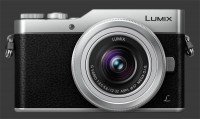
Panasonic Lumix GX850 is the smallest mirrorless. This entry-level unit only has one control-dial and lacks image-stabilization and an EVF, with no provision to add one. The mid-level GX85
Panasonic Lumix DMC-GX85 remains very compact while adding an EVF, image-stabilization and second control-dial. The upper-class GX9 reviewed here
Panasonic Lumix DC-GX9 improves further with a Tiling EVF and more advanced sensor and superior processing power. Note that the GX9 is not weatherproof like the GX8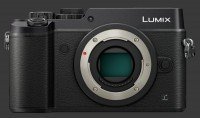
Panasonic Lumix DMC-GX8 it replaces yet manages to be considerably smaller and lighter.

Micro Four-Thirds Lenses
There is a huge number of Micro Four-Thirds lenses available. Together Panasonic and Olympus make almost ¾ of these. Rectilinear lenses cover a focal-range from 7 to 400mm. Plus, there are a few fisheye lenses, including a 4mm Circular
Venus Optics Laowa 4mm F/2.8 Circular Fisheye that renders a 210° field-of-view. The majority of these lenses are small and light, making Micro Four-Thirds the most compact mirrorless system that is still in production.
The lineup includes nearly every type of lens: constant aperture zooms, light zooms, high zooms, bright primes, small primes and macro lenses. Panasonic and Olympus lenses may be used interchangeably on cameras of either brand. Panasonic makes the only 3D lens, making Micro Four-Thirds the only 3D-capable mirrorless system. This lens projects two views of the scene which must be merged into a 3D image in software.

Micro Four-Thirds and Sony E have the most support from third-party lens manufacturers. Irix, Panasonic, Samyang, Sigma, Tamron, Tokina, Venus Optics, Zuiko, ZY Optics all make native Micro Four-Thirds lenses. Some of these third party only produce manual lenses, as they do for other mounts too. Micro Four-Thirds cameras are compatible with Four-Thirds lenses, including weather-sealed ones using a weather-sealed mount-adapter. All Four-Thirds lenses are fully functional when used on a Micro Four-Thirds camera with the right adapter.
Sony E
Sony introduced the NEX mirrorless platform based on a new E-mount in 2010, making it the second mirrorless system. At the time, Sony had Alpha DSLRs with the A-mount acquired from Konica-Minolta. Eventually, they renamed the mirrorless system Alpha and even called some of their mirrorless cameras DSLRs! Confusion lasted several years as new mirrorless were launched under the Alpha name. Eventually, DSLRs were phased out, leaving only Alpha mirrorless.
The first Sony E-mount mirrorless digital cameras were built around a 1.5X-Crop APS-C sensor. This let Sony create highly compact lenses with coverage limited to APS-C, known as Sony E lenses. Although Sony built a Full-Frame Mirrorless
Sony Alpha SLT-A99V around the A-mount in 2012, it was in 2013 that Full-Frame E-mount cameras were launched. Compatible lenses, called Sony FE lenses, were added to the lineup. Even though the same physical mount is used, Full-Frame mirrorless cameras require FE lenses to use the entire sensorA Sony E lens actually mounts on a Sony Full-Frame mirrorless. Some cameras recognize this with Sony made lenses and crop the imaging area to match APS-C..

Sony APS-C Mirrorless Digital Cameras
Sony engineers are masters of miniaturization. They consistently create the smallest mirrorless cameras for a given sensor-size. Their APS-C models all share a distinct slim rectangular design with protruding hand-grip. They are similar in size to Micro Four-Thirds cameras and even smaller in many cases. All but one of these cameras feature a builtin EVF and dual control-dials.
There is little variation between APS-C models at this time. There used to be an advanced triple control-dial NEX-7
Sony Alpha NEX-7 but it was discontinued without ever being replaced as Sony pushed their high-end customers towards Full-Frame. The current lineup though shows 3 levels of mirrorless:
- Entry-Level: The ultra-light A5xxx series is the most basic with a single control-dial and no viewfinder or provision to add one. These bodies depend on optical stabilization built into lenses and are so slim that they do not fit a hot-shoe.
- Mid-Level: The lower A6xxx series ranges from A6000

Sony Alpha A6000 to A6400
Sony Alpha A6400. These highly compact mirrorless have slightly thicker bodies to accommodate a built-in EVF which protrudes slightly from the back, a deeper hand-grip to hold a more powerful battery and a hot-shoe. A second control-dial appears on all these models. The newest among these are even weatherproof, although only two weatherproof Sony E lenses exist. - Advanced: The upper A6xxx series starting at A6500

Sony Alpha A6500 add image-stabilization and keep the weatherproof body with dual control-dials. All A6xxx cameras have a large EVF with 0.7X magnification and an Eye-Start Sensor. Advanced models use a sharper 2.4 MP EVF compared to some Mid-Level ones with 1.4 MP EVFs.
When Sony acquired Konica-Minolta, they obtained the best EVFs on the market by a significant lead. Sony continues this tradition by producing class-leading EVFs. Their units are extremely sharp with exceptionally high magnification and the best Exposure-Priority preview available, making these mirrorless liberating to use.

Sony Full-Frame Mirrorless Digital Cameras
Professional photographers and enthusiasts have been going Full-Frame mostly because Sony managed to make incredibly compelling models that are smaller than APS-C DSLRs and similar in size to mirrorless cameras with the same sensor-size from other manufacturers. As pricey professional-level cameras, all Sony Full-Frame Mirrorless Cameras offer triple control-dials and are weatherproof to some extent.
Every model in the lineup offers a large 0.5" EVF with 2.4 MP minimum, magnification of at least 0.7X, 100% coverage and an Eye-Start Sensor. The flagship EVF offers an incredible 5.8 megapixels! Image-stabilization was added in the second generation and kept improving since then with the latest 5-axis sensor-shift system being effective to 5.5-stops, which is not far behind the most capable IBIS.
Full-Frame mirrorless cameras from Sony are split along 5 series. The Sony Alpha A1
Sony Alpha A1 is in a league of its own, combining ultra-high resolution and speed unlike anything on the market. The Sony Alpha A9 II
Sony Alpha A9 II is the second generation high-speed mirrorless and is aimed at directly at action photographers. The A9
Sony Alpha A9 introduced the first ultra-fast full-resolution continuous drive and Blackout-Free EVF on a Full-Frame camera of any kind.
There are 3 parallel A7-series of nearly identical cameras:
- The standard A7-series offers optimal balance between resolution, light sensitivity and speed. These are among the most affordable full-frame cameras in the market.
- High resolution takes priority in the A7R-series. The result is images that capture extremely fine details at the expense of increased image-noise in low-light and slower speed due to the high volume of data generated.
- The A7S-series is designed to maximize light sensitivity and dynamic-range. These cameras use extra-large pixels which results in extremely low image-noise yet at lower resolution than other full-frame cameras.

E-Mount Lenses
Sony now makes more lenses for its own mirrorless system than any other manufacturer. This places them second after Olympus and Panasonic that together make more lenses for their shared Micro Four-Thirds platform. When counting third-party lenses, the situation reverses with more lenses made for Sony E-mount than any other mirrorless mount. The twist though is that lenses are split between APS-C and Full-Frame.
The rate at which Sony introduces lenses is unparalleled. They make lenses that cover 10-350mm for APS-C and that cover 12-600mm for Full-Frame. The latter can also be used on E-mount APS-C cameras. The full-frame lineup was created from the start for professional photographers and so all except two are weatherproof. Sony only makes rectilinear lenses.
Third-party manufacturers extend wide-angle coverage for Sony mirrorless. Among rectilinear lenses, APS-C expands to 9mm and Full-Frame to 10mm. Fisheye lenses go as wide as 4mm for APS-C and 12mm for Full-Frame. Sony makes a couple of macro lenses, while third-party makers add Ultra-Macro one with up to 5X of magnification.
The Sony E-mount design is based on the A-mount acquired from Konica-Minolta. Sony produces several adapters to connect A-mount lenses to E-mount cameras, two of which divert one third of light towards a built-in Phase-Detect AF sensor. This allows full autofocus using adapted A-mount lenses.

While mirrorless cameras are clearly smaller than DSLR with the same sensor-size and Sony took this to the next level, this benefit does not translate directly to optics. The shorter flange distance or mirrorless cameras allow more design flexibility but that does not always result in smaller lenses since light must be projected at the same focal-length onto the whole sensor. In fact, looking at most Sony lenses, one can see a collar that bridges the space between the mirrorless lens mount and were a DSLR lens would be mounted.
The bottom line is that the combined size and a mirrorless and native compatible lens is very comparable in size to a similar combination of DSLR and lens. Wide-angle lenses tend to save more bulk. The total weight difference is not huge either, although little differences accumulate and with a camera plus 3 to 4 lenses, one can save half a kilo or more.
Fujifilm X
Fujifilm launched their first two mirrorless cameras in 2012. Having no DSLR legacy to risk, Fujifilm designed the entire X-system from the ground up for photography enthusiasts willing to pay more for premium mirrorless cameras that offer exclusive quality and handling. In 2014, Fujifilm pushed this to the professional level with their first weatherproof mirrorless with even more efficient ergonomics, the Fujifilm X-T1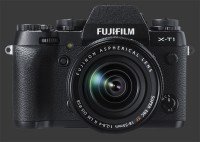
Fujifilm X-T1.

The X-Pro1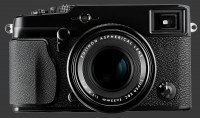
Fujifilm X-Pro1 introduced a unique sensor with a pseudo-randomized 6x6 grid of color-filters which avoids moire artifacts without using an anti-alias filter. This X-Trans CMOS sensor, shared between the X-Pro1 and X-E1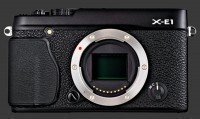
Fujifilm X-E1, started with 16 megapixels. Fujifilm defined the X-system with a new all-electronic lens-mount paired with a 1.5X APS-C sensor which is said to rival Full-Frame.
The X-Trans CMOS II sensor that followed incorporated on-sensor Phase-Detect AF at 325-Points and Fujifilm has been improving this technology ever since with now over 2.1 million Phase-Detection elements in their latest X-Trans sensors that are used on all their X-series of mirrorless digital cameras.
Eventually, intermediate level mirrorless cameras were added. These feature APS-C sensors and X-mount but with using traditional Bayer-Pattern CMOS which also requires less processing power to demosaic than X-Trans. Fuji reduced control-points on these cameras but kept dual control-dials throughout the system.

Fujifilm Mirrorless Digital Cameras
Starting from the original concept, Fujifilm expanded their lineup of APS-C mirrorless digital cameras to both higher and lower ends models. These now span simple intermediate-level cameras to a high-end professional model suitable for action photography. The X-system is split among 5 series:
- A-Series: These cameras use a standard Bayer CMOS sensor with an Anti-Alias Filter to prevent moire. They feature a simple interface with dual control-dials and a limited number of physical controls.
- E-Series: The second Fujifilm mirrorless series improved the rangefinder design of the original X-Pro1 with more streamlined ergonomics and a standard corner-mounted mid-size EVF. The X-E3 reviewed here

Fujifilm X-E3 was one the best performing mirrorless cameras around and it introduced a controversial design that proved highly efficient. In early 2021, Fujifilm launched the Fujifilm X-E4
Fujifilm X-E4 at a lower level than the 2017 X-E3. - T-Family: This family of APS-C cameras offers a hybrid mechanical and digital design that delivers a highly tactile feel and make them extremely efficient to operate. The lineup is comprised of 3 series:
- X-Txxx Series: The 3-digit series is based on the same standard Bayer CMOS sensor as the A-series, which makes them particularly affordable. They are extremely efficient and ergonomic though, offering triple control-dials plus a mid-size built-in EVF with Eye-Start Sensor. The newest Fujifilm X-T200

Fujifilm X-T200 features the best screen of any camera, a 3.5" LCD with an incredible 2.8 megapixels! - X-Txx Series: These incredibly-compact APS-C mirrorless are built around the newest X-Trans CMOS sensor that deliver high-speed continuous shooting and extremely fast autofocus throughout the frame. Despite their small size, these cameras squeeze in a mid-size EVF with Eye-Start sensor plus dual control-dials and direct dials for EC, Shutter-Speed and Drive modes.
- X-Tx Series: These Fujifilm APS-C mirrorless usually launch a new generation of X-Trans CMOS sensor. Models in this series include everything from the X-Txx series yet in a larger weatherproof and freezeproof body. The larger size allows them to offer a higher magnification EVF plus an additional direct dial for ISO. The X-T4 reviewed here
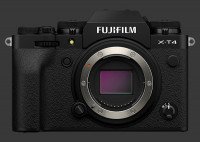
Fujifilm X-T4 is the current flagship X-series and considered one of the most well-rounded mirrorless on the market and the first in the series to feature builtin image-stabilization.
- X-Txxx Series: The 3-digit series is based on the same standard Bayer CMOS sensor as the A-series, which makes them particularly affordable. They are extremely efficient and ergonomic though, offering triple control-dials plus a mid-size built-in EVF with Eye-Start Sensor. The newest Fujifilm X-T200
- X-Pro: The X-Pro1 launched the success story of Fujifilm with both its innovate X-Trans CMOS sensor and retro rangefinder design that features a unique hybrid viewfinder that switches instantly between EVF and OVF modes. This series is certainly eccentric with its oversize body and analog controls and the X-Pro3

Fujifilm X-Pro3 that just started shipping in 2020 adds another twist to the mix: A reverse-mounted tilting screen and Color e-Ink status display in the usual location of the LCD. - X-H1

Fujifilm X-H1: An individual model rather than a series. Fujifilm launched the X-H1 as a hybrid stills and video camera. It was the only Fujifilm model with built-in image-stabilization at the time. Despite making its body rather bulky, that system was not particularly effective and Fujifilm discontinued the series entirely.
Fujifilm is the most innovative digital camera manufacturer and they often make radical changes to see how the market reacts. Their tactile ergonomics are now legendary and the X-Trans sensor is extremely well regarded. On-sensor Phase-Detect, which they invented, has been adopted by most mirrorless camera manufacturers.

X-Mount Lenses
Unlike every other camera manufacturer, Fujifilm launched their system with only bright prime lenses. The first zoom was added 8 months later and they have since expanded the lineup with rectilinear lenses covering 8 to 400mm. They emphasized performance optics with many new prime lenses and bright zooms, all exclusively designed for APS-C sensors. The only issue with their high-end lineup is that weatherproof lenses were only added from 2014.
The speed at which Fujifilm launches new lenses is impressive and they now have a wide variety of lenses. Most Fujifilm X-mount lenses are part of the XF family that features an aperture-ring on all lenses. For the handful of variable aperture-zooms, an unmarked fly-by-wire ring is used. Unfortunately, the detents on the aperture ring are very soft on all these lenses which may cause accidental changes.
With the introduction of intermediate cameras, a new XC series of lightweight lenses without an aperture-ring was added. There are a handful of those, mostly dim zoom lenses designed to be extremely compact. A control-dial must be used to set the aperture. All zooms in the XC-family offer optical image-stabilization. The special Fujifilm Fujinon XC15-45mm F/3.5-5.6 OIS PZ
Fujifilm Fujinon XC15-45mm F/3.5-5.6 OIS PZ kit lens is the only Power-Zoom in the lineup.
Fujifilm makes the widest rectilinear lens for APS-C sensor, the exceptional XF 8-16mm F/2.8R LM WR
Fujifilm Fujinon XF8-16mm F/2.8R LM WR captures 121° field-of-view which is only possible with a fisheye on all other systems except for Full-Frame. They have one macro and one apodization ultra-bright prime.
Zeiss produces autofocus prime lenses for X-mount, while a handful of other makers produce MF-only lenses for the mount. Together they almost double the number of X-mount lenses available with several fisheye lenses, a few ultra-macros, an extremely bright F/0.95 lens and one Tilt-Shift lens.
Next
Read about More Mirrorless Systems 2024 or Proceed to Step 4, Mirrorless Camera Buying, for advice and considerations before buying a mirrorless.
Please Support Neocamera
All information on Neocamera is provided free of charge yet running this website is a huge endeavor. Purchases made via affiliate links found throughout the site help keep it running and up-to-date. There is no additional cost to you, so please consider buying via these links to our affilates:
Thank you for your support!
New Cameras & Lenses

Sony FE 28-70mm F/3.5-5.6 OSS II
Stabilization & Weatherproof
Sony E Mount Zoom
2025-12-02
Sony Alpha A7 V
33 Megapixels Mirrorless
Sony E Lens Mount
Built-in Stabilization
Weatherproof
2025-12-02
Venus Optics Laowa 35mm F/2.8 Zero-D Tilt-Shift 0.5X Macro
Leica L Mount Prime Lens
2025-11-29
Venus Optics Laowa 35mm F/2.8 Zero-D Tilt-Shift 0.5X Macro
Hasselblad XCD Mount Prime Lens
2025-11-29
Venus Optics Laowa 35mm F/2.8 Zero-D Tilt-Shift 0.5X Macro
Fujifilm G Mount Prime Lens
2025-11-29
Venus Optics Laowa 35mm F/2.8 Zero-D Tilt-Shift 0.5X Macro
Sony E Mount Prime Lens
2025-11-29
Updates
2025.11.13

Best Gifts for Photographers in 2025 by Budget
The annual Neocamera Photography Gift Guide updated to 2025. Find great gifts for photographers with any price budget.
2025.07.07

Stellar Photo Recovery Review
Review of Stellar Photo Recovery V12. This Windows and MacOS software can recover photos and videos in a huge number of formats from memory cards, USB drives, SSDs and HHDs.
2025.05.14

Huion Kamvas 13 Gen 3 Review
In-Depth review of the Huion Kamvas 13 Gen 3 Pen Display Tablet for photographers and graphic artists.
2025.01.18

Fujifilm GFX 2025 Lens Roundup
Lens Review roundup of Fujifilm GFX Medium-Format lenses. Quality, performance and handling of the GF20-35mm F/4R WR, GF30mm F/3.5 Tilt-Shift and the GF55mm F/1.7.
2024.11.18

Best 2024 Photography Gifts for Every Budget
Great gifts for photographers and photo enthusiasts selected for every budget among the best products of 2024.
2024.08.07

Eye Protection Tips for Professional Photographers
The four main considerations for professional photographers regarding eyewear.
2024.07.14

Fujifilm X100VI Review
Flagship fixed-lens compact digital camera with a 40 MP sensor and Image-Stabilization, a first for the series. Retro design featuring dual control-dials, plus direct ISO, Shutter-Speed and EC dials. Its hybrid viewfinder can switch between EVF and OVF mode.
2024.05.09

Fujifilm GFX100 II Review
Flagship 102 Megapixels Medium-Format Mirrorless Digital Camera with 8-Stop 5-Axis IBIS, 8 FPS Drive, 8K Video and 400 MP Super-Resolution capture in a weatherproof and freezeproof body with dual control-dials and dual memory-card slots.
2024.04.03

Fujifilm X-T5 Review
Newest Fujifilm flagship boasting a 40 MP APS-C sensor, 5-axis IBIS with 7-stop efficiency, 15 FPS continuous drive, 6.2K Video capture, dual control-dials and dual SDXC UHS-II slots in a sturdy weatherproof and freezeproof body.
2023.11.20

Best Digital Cameras of 2023
Find out which are the Best Digital Cameras of 2023. All the new Mirrorless Digital Cameras from entry-level to high-end professional.
2023.07.10

Fujifilm X-H2 Review
40 Megapixels APS-C Hybrid Mirrorless Digital Camera with 7-stop IBIS. Fastest shutter ever and 8K video capture. Large builtin EVF with 0.8X magnification and 5.8 MP, plus an Eye-Start Sensor. Packed with features and large number of controls in a weatherproof and freezeproof body.
2023.05.07

Sony FE 20-70mm F/4G Review
Review of the unique Sony FE 20-70mm F/4G lens. The optical zoom of this lens spans ultra-wide-angle and medium focal-length coverage, making it one of the most versatile Full-Frame lenses on the market.







